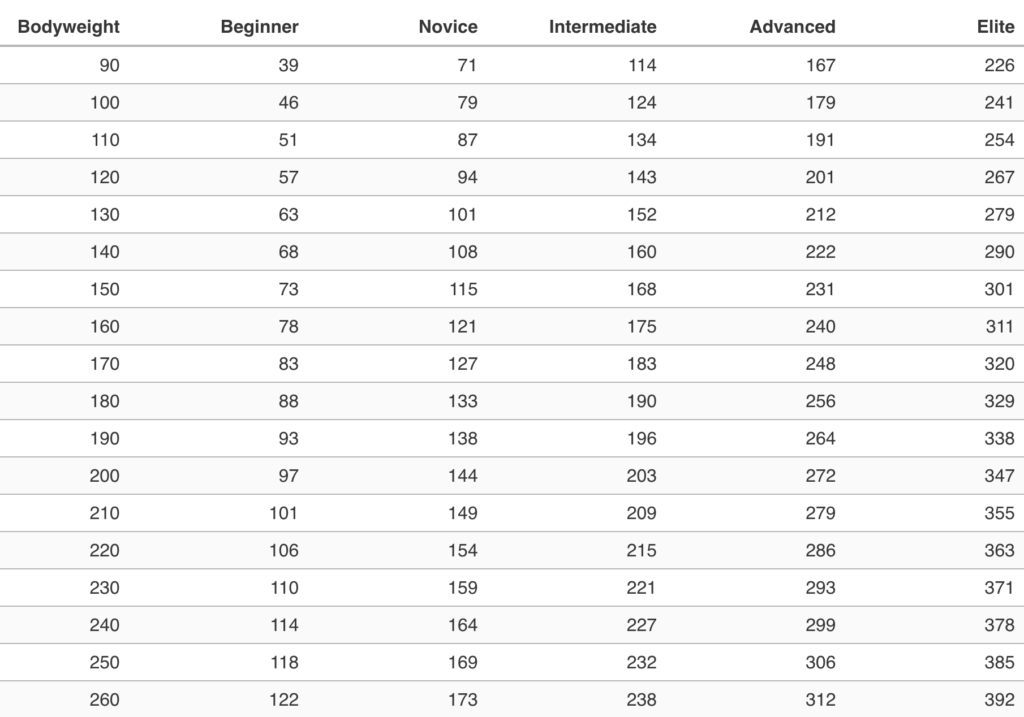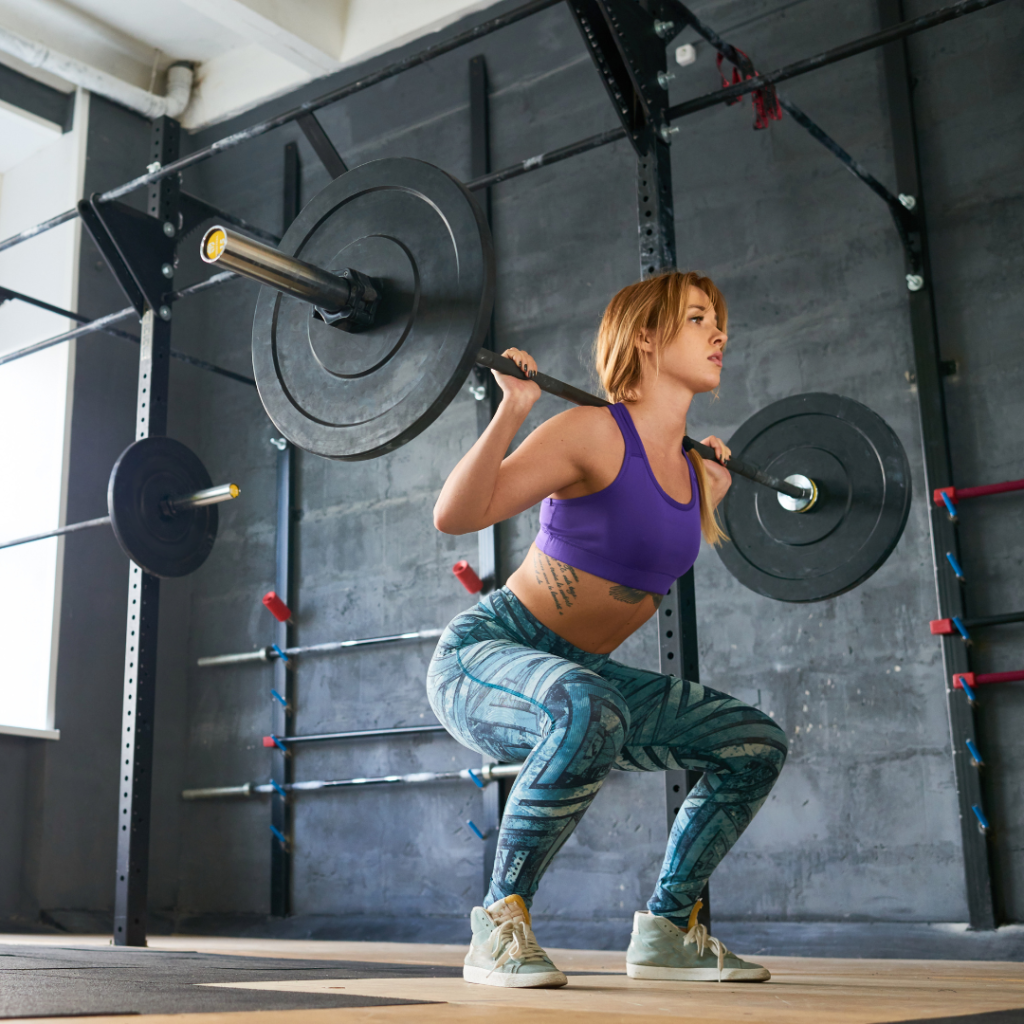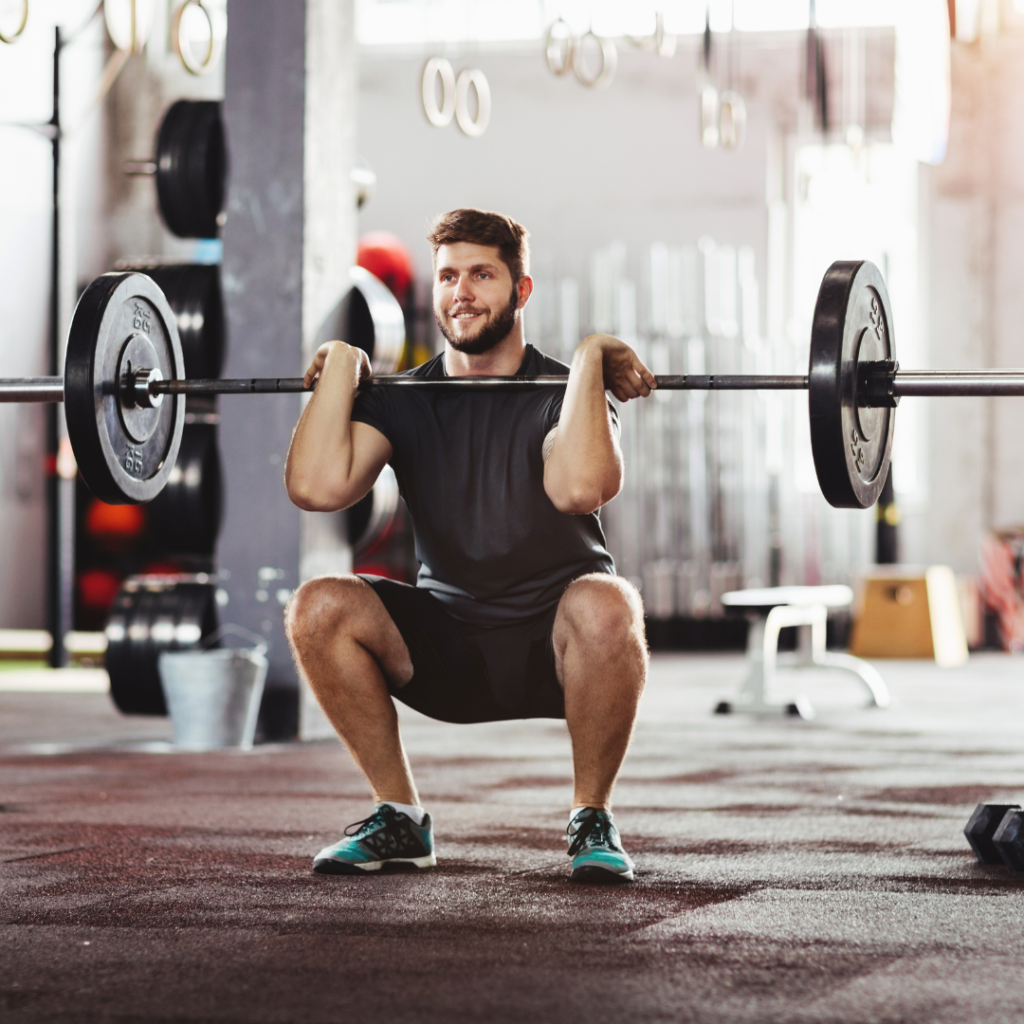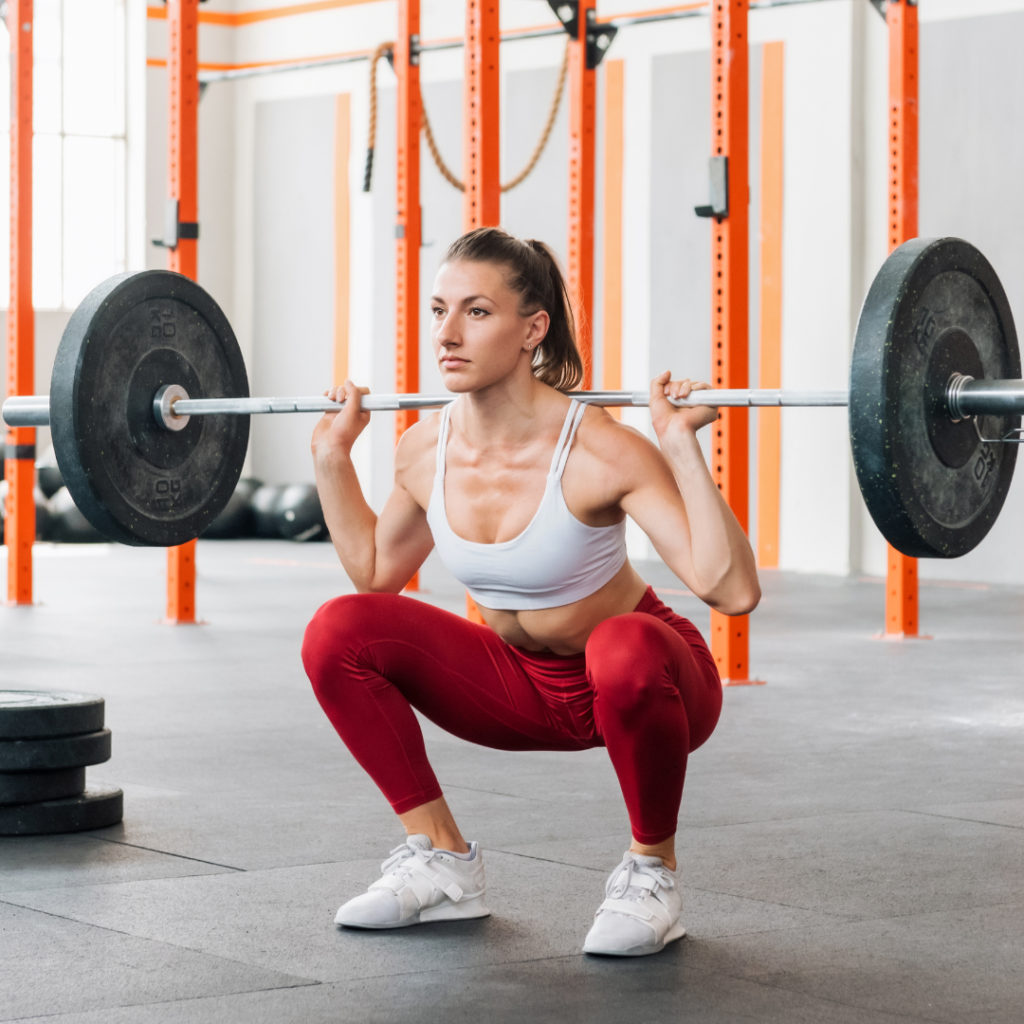A good squat weight for men and women isn’t the same, though there are plenty of similarities!
Whether you’re an experienced powerlifter looking to increase your personal best or a beginner just starting out in their lifting journey, understanding what constitutes a good squat weight is essential.
In this post, we’ll explore exactly what this magic number entails and how you can find the right fit for yourself.
So take a deep breath, grab that barbell, and let’s dive into it – because everyone needs to know the difference between good squats and great ones!
Average Squat For Men
The average squat weight for men is a good indicator of overall strength and fitness level.
Squatting requires a combination of power, balance, flexibility, and strength in order to be successful.
The amount of weight lifted will depend on the individual’s bodyweight, training experience, and technique used.
On average, an untrained male lifter can expect to lift around 100-150 lbs when performing a full-depth squat.
As a lifter gains more experience and becomes proficient at the lift, they can expect to increase their 1RM (one-repetition maximum) by 20-30 lbs.
For most experienced lifters who are actively training their legs and using proper technique in the squat movement, they can expect their 1RM to range between 225-300 lbs.
This puts them in an advanced category of strength that is impressive when compared to most gym-goers.
Those who have trained specifically for powerlifting competitions may be able to achieve even higher levels of strength, however 287 lb is still a solid weight for an intermediate level lifter.
Male squat standards chart by: Strength Level

Average Squat For Women
The average squat weight for female lifters is 161 lb (1RM).
This puts them in the Intermediate category of strength level, a very admirable lift.
For those beginning to lift weights, aiming for the 65lb (1RM) mark is impressive and a good start.
To become Advanced on the Strength Level, women should aim to squat at least 225lb (1RM).
With consistent training, this goal is attainable.
For those who have been lifting for some time and can comfortably squat more than 225lb (1RM), they are considered Elite lifters as they have achieved an extraordinary level of strength.
Female Elite lifters can expect to be able to squat more than 300lb (1RM).
Female squat standards chart by: Strength Level

What Is 1RM (One Rep Max)?
One rep max (1RM) is a measure of an individual’s maximal amount of weight that can be lifted in a single repetition for a specific exercise.
It is used to assess strength and muscular performance, allowing athletes and trainers to track progress over time.
The highest weight lifted in one repetition gives an indication of how much muscle force can be exerted in a given task.
1RM is typically determined by performing multiple submaximal repetitions with progressively heavier weights until the subject can lift no more — this process should always be done under the guidance of trained professionals.
1RM helps to determine optimal training intensity levels and provides valuable information about strength levels and muscle fatigue.
It also serves as an important marker for gauging cardiovascular conditioning, as a higher 1RM typically requires greater heart rate and oxygen consumption to complete the lift.
How To Properly Squat

To perform a proper squat:
1. Start in a standing position with your feet hip-width apart and your arms out in front of you for balance.
2. As you sit back into the squat, bend your knees and lower your hips until they are parallel to the ground or slightly lower. Make sure to keep your weight in your heels as you do this.
3. Keep your chest up and spine straight throughout the entire movement; don’t let your back round or drop forward when going down. Engage your core muscles to help protect your lower back from injury.
4. Push through your heels to return to a standing position at the end of each repetition, squeezing your glutes (butt) muscles as you stand up. This will help engage more muscles than just relying on legs alone!
5. When finished with all repetitions, take some time to stretch the legs and hips afterward – this will help with recovery and maintain flexibility over time!
How Hard Is It To Squat Your Bodyweight?

Squatting your bodyweight is typically considered one of the most difficult exercises you can do.
It requires a great deal of strength, balance and coordination as you have to lift the weight of your entire body without any external assistance.
This exercise also puts significant pressure on your core muscles, legs, and lower back stability, so it’s important to engage in proper form while squatting your bodyweight.
Depending on your current level of fitness, it may take weeks or months of practice before you are able to squat your bodyweight with good form.
Additionally, if you’re new to lifting weights or have never done squats before, it’s important to start light and work up gradually in order to avoid injury.
You will need to master proper technique and focus on engaging all the major muscle groups involved including glutes, quads, hamstrings and calves.
With regular training and an understanding of proper form, you should be able to reach the goal of squatting your own body weight over time.
Tips For Improving Squats

- Focus on form: Before adding weight to your barbell squats, it is important to make sure that you practice proper technique. To ensure you are performing the movement correctly, focus on keeping your back straight and maintaining a neutral spine throughout the entire exercise. Additionally, ensure that your feet are shoulder-width apart and that your toes are slightly pointed outwards.
- Engage your core: Make sure you engage your core muscles during your squats by drawing in the abdomen and tightening it throughout the entire movement. Doing so will help transfer power from your lower body to the upper body as you squat down, aiding in stability and powerful lifting capability.
- Choose a challenging weight: In order to improve your squatting ability, it is important to choose an appropriate weight that challenges you while still allowing you to maintain proper form throughout the exercise. If needed, start light with just bodyweight and slowly increase the load as needed until you find a comfortable weight for each set of squats.
- Use compound movements: Squats can be combined with other strengthening exercises such as kettlebell swings or deadlifts for a more comprehensive workout routine specifically tailored for improving lower body strength and power output when squatting.
- Focus on breathing patterns: Effective breathing plays an important role in performing any type of physical activity but especially when doing heavy or strenuous exercises such as squats; this is because oxygen intake helps regulate heart rate, reduce fatigue and allows muscles to generate more force during each repetition of squats which can all lead to improved performance over time . To improve breath control whilst exercising try exhaling on exertion (when rising from the bottom position) and inhaling at rest (when lowering into the bottom position).
FAQs
What is a good squat weight?
A good squat weight depends on your experience level and physical fitness.
For beginners, it’s generally recommended to start with just bodyweight and then gradually increase the load as you become more comfortable with proper form.
Once you gain more experience, you can begin to add external weights such as a barbell or dumbbells to your squats.
Ultimately, it’s important to choose a weight that challenges you while still allowing you to maintain good form throughout the entire exercise.
What are good squat variations?
Some good squat variations include goblet squats, front squats, and overhead squats. All of these exercises are good for developing strength, balance, and power in the lower body.
They also help to engage your core and challenge different muscle groups which can lead to greater overall results from your workouts.
Are squats good for building muscle?
Yes, squats are an excellent exercise for building muscle in the lower body.
Squats work multiple muscle groups at once and enable you to lift heavier weight than other exercises.
This can increase strength and hypertrophy over time, leading to better overall physical fitness.
Do squats help with weight loss?
Yes, squats can help with weight loss.
Squats are a good form of exercise that uses multiple muscle groups, allowing you to burn a good amount of calories in a short period of time.
Additionally, squats improve your metabolic rate which can make it easier for you to lose weight over time by burning off extra calories.
Are squats bad for the knees?
No, squats are not bad for the knees when performed correctly with good technique and an appropriate amount of weight.
Squats can actually help to build strength and stability in the knees when done properly, aiding in overall joint health.
It’s important to use good form and focus on your breathing while exercising to ensure safe and effective squatting.
